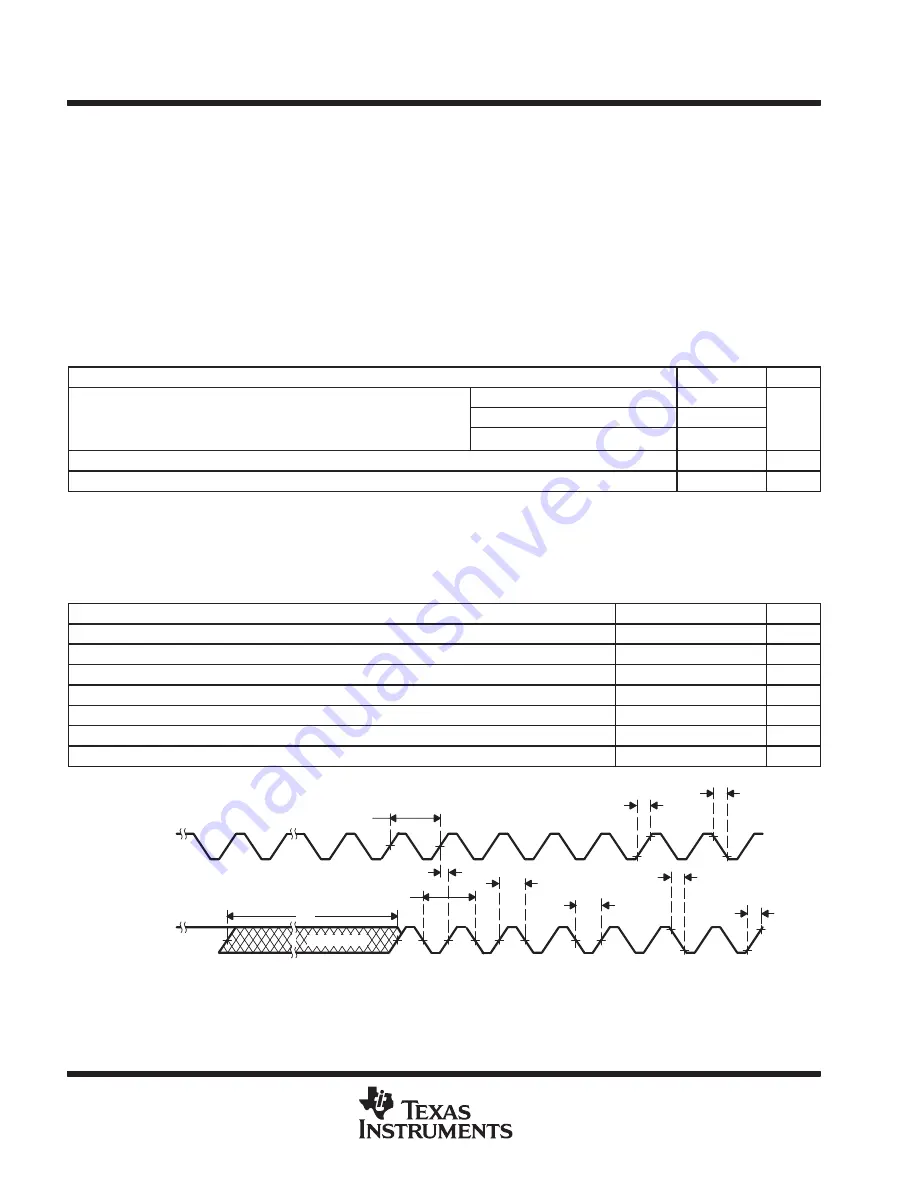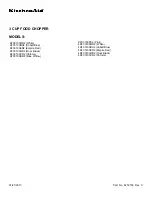
SPRS079E – OCTOBER 1998 – REVISED AUGUST 2000
38
POST OFFICE BOX 1443
•
HOUSTON, TEXAS 77251–1443
multiply-by-N clock option
The frequency of the reference clock provided at the X2/CLKIN pin can be multiplied by a factor of N to generate
the internal machine cycle. The selection of the clock mode and the value of N is described in the clock generator
section.
When an external clock source is used, the external frequency injected must conform to specifications listed
in the timing requirements table.
NOTE:
All revisions of the ’5402 can be operated with an external clock source, provided that the proper
voltage levels be driven on the X2/CLKIN pin. It should be noted that the X2/CLKIN pin is referenced to
the device 1.8V power supply (CVdd), rather than the 3V I/O supply (DVdd). Refer to the recommended
operating conditions section of this document for the allowable voltage levels of the X2/CLKIN pin.
timing requirements (see Figure 12)
†
MIN
MAX
UNIT
Integer PLL multiplier N (N = 1–15)
20‡
200
tc(CI)
Cycle time, X2/CLKIN
PLL multiplier N = x.5
20‡
100
ns
tc(CI)
Cycle time, X2/CLKIN
PLL multiplier N = x.25, x.75
20‡
50
ns
tf(CI)
Fall time, X2/CLKIN
8
ns
tr(CI)
Rise time, X2/CLKIN
8
ns
† N = Multiplication factor
‡ The multiplication factor and minimum X2/CLKIN cycle time should be chosen such that the resulting CLKOUT cycle time is within the specified
range (tc(CO))
switching characteristics over recommended operating conditions [H = 0.5t
c(CO)
]
(see Figure 10 and Figure 12)
PARAMETER
MIN
TYP
MAX
UNIT
tc(CO)
Cycle time, CLKOUT
10
tc(CI)/N†
ns
td(CI-CO)
Delay time, X2/CLKIN high/low to CLKOUT high/low
4
10
17
ns
tf(CO)
Fall time, CLKOUT
2
ns
tr(CO)
Rise time, CLKOUT
2
ns
tw(COL)
Pulse duration, CLKOUT low
H–2
H
ns
tw(COH)
Pulse duration, CLKOUT high
H–2
H
ns
tp
Transitory phase, PLL lock up time
30
s
† N = Multiplication factor
tc(CO)
tc(CI)
tw(COH)
tf(CO)
tr(CO)
tf(CI)
X2/CLKIN
CLKOUT
td(CI-CO)
tw(COL)
tr(CI)
tp
Unstable
Figure 12. External Multiply-by-One Clock Timing
















































